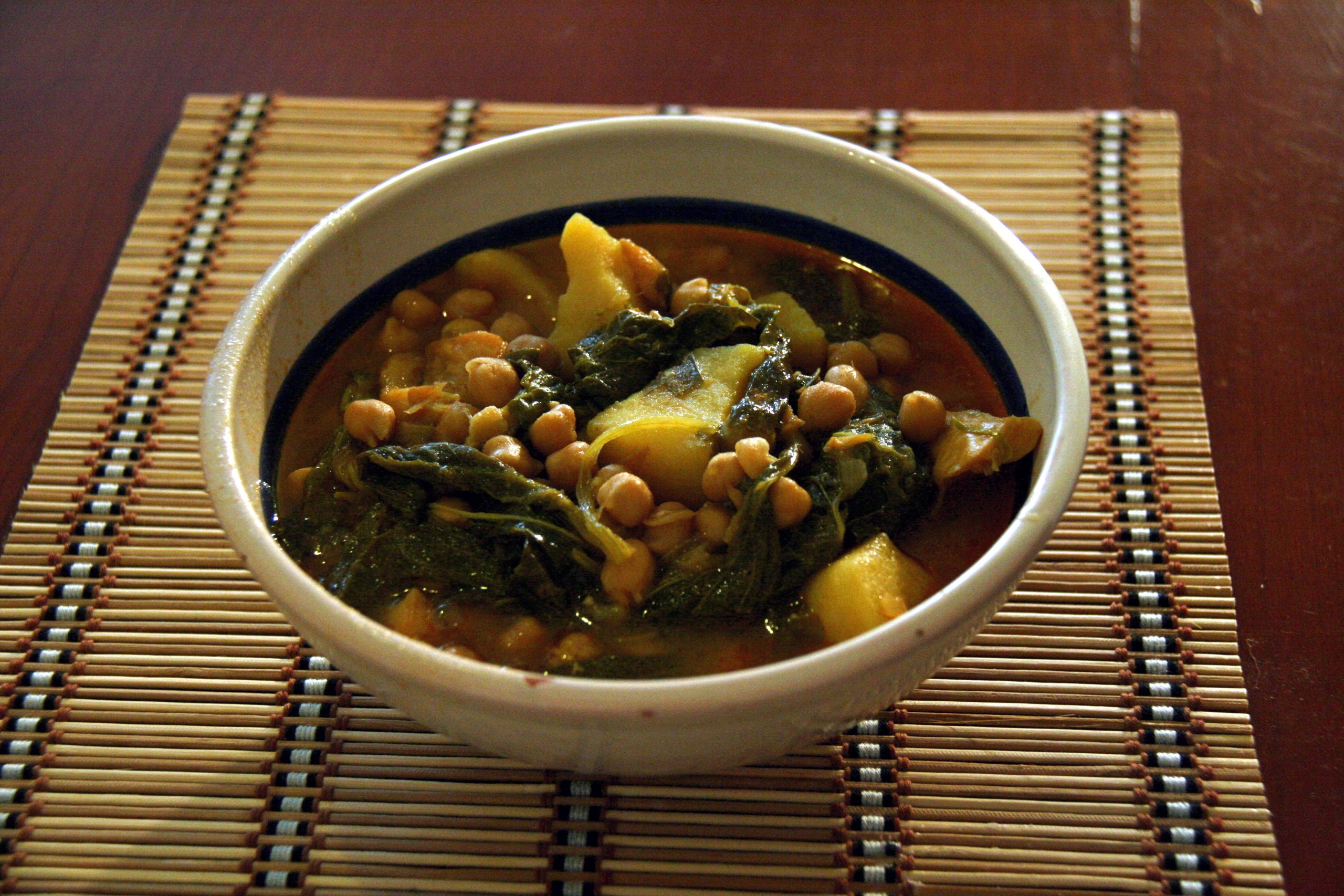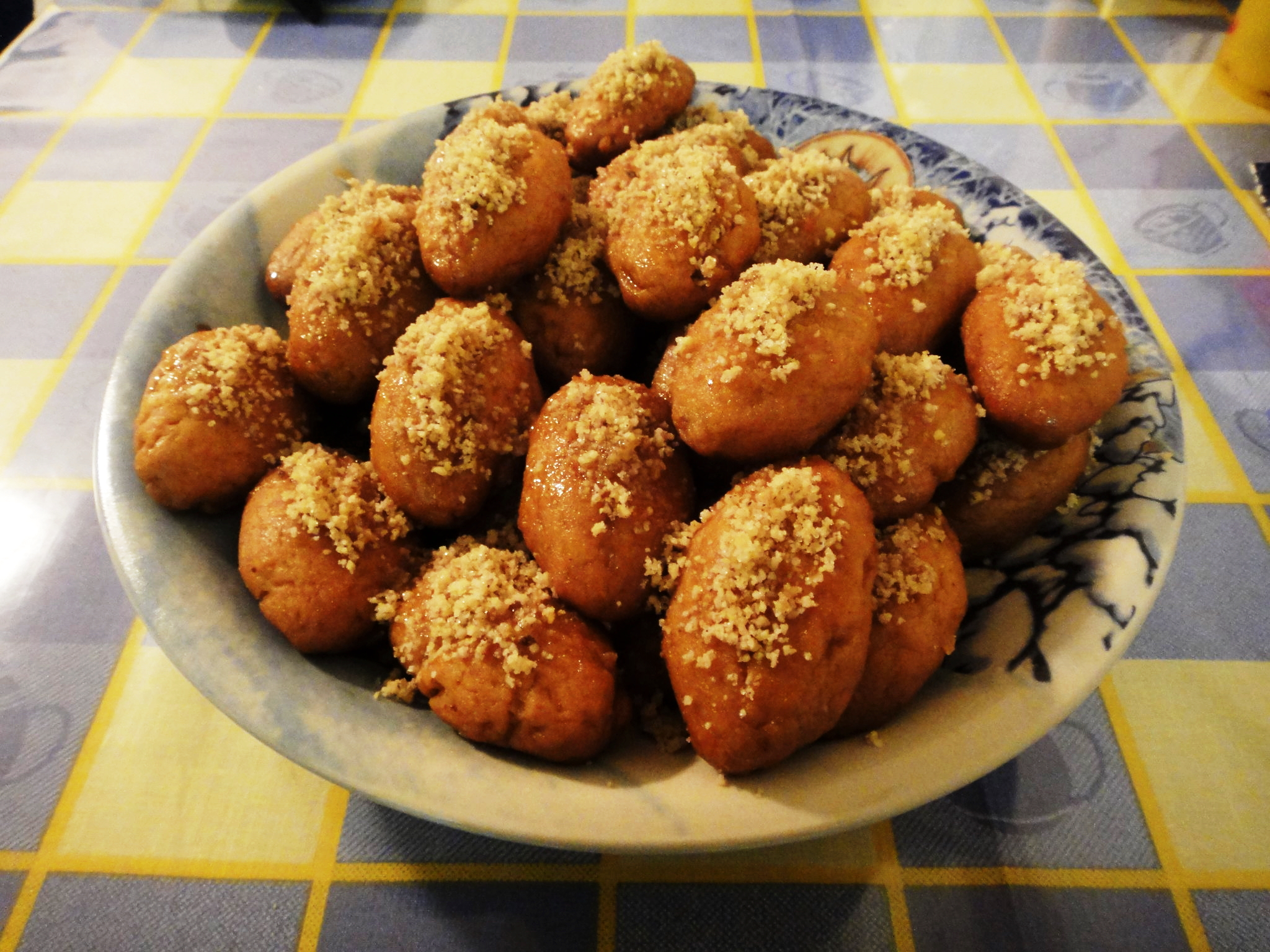On 26 November, our Spanish teacher Rocío will show you how to prepare a typical Spanish dish that’s especially good when it’s cold outside: potaje. In this blog she tells us what it exactly is, when Spanish people eat it and what it means to them.
What is potaje?
It’s a stew with legumes (mostly chickpeas or beans), vegetables and some pieces of meat or cold meat, but you can also make it vegetarian if you like. It’s one of the most popular dishes within the Spanish cuisine, although the recipe varies in every region.
Some of these variations are called cocido and puchero and the difference lies in the ingredients. Sometimes you can also improvise your own recipe depending on what you have in your fridge! Some of the most popular ones are el cocido madrileño (from the capital), la fabada asturiana (from the north) or el potaje andaluz (from the south). It is a very complete meal, healthy, easy to prepare and its ingredients are quite low cost. And, of course, super yummy!
When do we Spaniards eat it?
Potaje is a warm meal, so we mostly eat it during autumn and winter. It’s a very caloric dish, since you combine the vegetables with legumes and several types of meat. Traditionally it is also eaten during Easter but then made with fish.
What does it mean to Spanish people?
This potaje, cocido puchero, is something that we learn from our mums and from our grandmas. We have watched them cook it since we were children. When we grow up and we leave our homes, we ask them for the recipe, of course. Although nobody will cook it like them!
For us Spaniards this dish means home, family and tradition. Especially for the ones living abroad, eating a good potaje brings back all the memories, spoon after spoon.
What will participants do during this workshop?
Everything! Haha. First they will clean, peel and cut the vegetables. Then the instructions are as follows:
Blend part of the ingredients to create a thick paste.
Rinse the chickpeas.
Cook apart the spinach and the chorizo.
Add all the ingredients in the pot and stir constantly.
Help to clean after cooking ; )
Enjoy the meal!
Vocabulario en Español
Ingredientes
zanahoria – carrot
cebolla – onion
ajo – garlic
pastillas de caldo (o de Avecrem) – broth tablets (or Avecrem)
comino – cumin
hoja de laurel – bay leaf
patatas – potatoes
chorizo
espinacas – spinach
garbanzos – chickpeas
judías blancas – white beans
aceite de oliva – olive oil
sal – salt
Utensilios de cocina
tabla de cortar – cutting board
cuchara – spoon
cucharón – ladle
cuchillo – knife
colador – colander
olla – cooking pot
tapa (o tapadera) – cover
jarra – jar
batidora – blender
Verbos
lavar – to wash
pelar – to peel
cortar – to cut
echar (a la olla) – to put (in the pot)
remover – to remove
colar – to strain
añadir – to add
batir – to blend
esperar – to wait
cocinar – to cook
sacar – to take out
servir – to serve
comer – to eat


